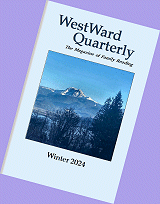Composing a Sonnet
If you consistently use only one form — whether free verse, rhymed verse, or simply your own made-up style of verse — why not consider expanding your writing ability to other styles? In doing so, you will learn new skills and stand a better chance of winning contests and getting your poetry published.
In this article we discuss composing a sonnet. In case you’'re saying, “Oh no, I don’'t know how to write a sonnet!” I want to assure you that if you can write other types of poetry you can write a sonnet. All it requires is following a few simple directions.
The two most frequently used sonnets are the Italian (Petrarchan) and the English (Shakespearean). But to make things simpler, I will give you only the English sonnet pattern this time. The English sonnet has four divisions: three stanzas (four lines each) and a rhymed couplet (two lines). The typical rhyme-scheme is a b a b, c d c d, e f e f, g g — all of which I will explain in detail.
Most sonnets have five “feet” (beats) and ten syllables to each line. Here is a method that I use because it’'s so easy. You have ten fingers, right? Each line has ten beats: ta-da, ta-da, ta-da, ta-da, ta-da. Count them on your fingers. Using my poem as an example, say the first line out loud counting the beats (or syllables) on your fingers. “Four times a year fair nature changes clothes.” You can use this method as you write each line of your sonnet to help you get the correct number of beats.
Now for the rhyme scheme. What is all this a b a b stuff? It tells you which line rhymes with which — the first line with the third, the second with the fourth. Then c d c d and e f e f tell you that you will choose different rhyming words for each stanza, but keep the first-third, second-fourth pattern.
The last two lines are called a couplet, the g g means they rhyme with each other and again are different words from those you used in your other rhymes.
If you have any questions refer to my sonnet below, “Nature’s Stage.“ It will help you understand how to proceed. Think of a good topic and choose your own rhyming words. It doesn’'t matter what they are as long as they fit the rhyme-scheme pattern. Happy writing!
Nature's Stage
|
Four times a year fair nature changes clothes.
In spring she sloshes forth in muddy brown,
Her varied autumn gilds the earth with haze,
O Lord, thy beauteous seasons we must praise — © Shirley Anne Leonard |
a
c
e
g |
©2015 Laudemont Press


